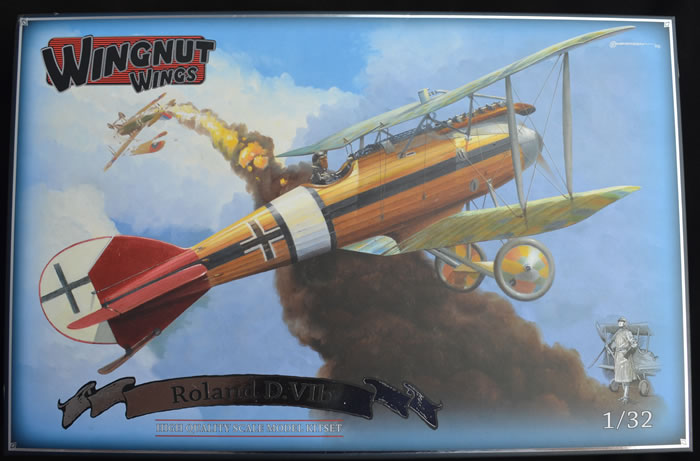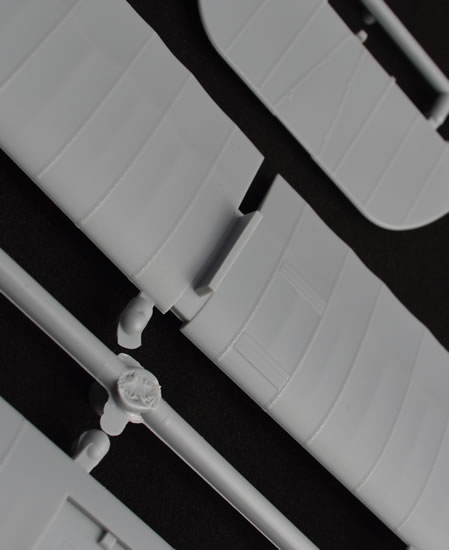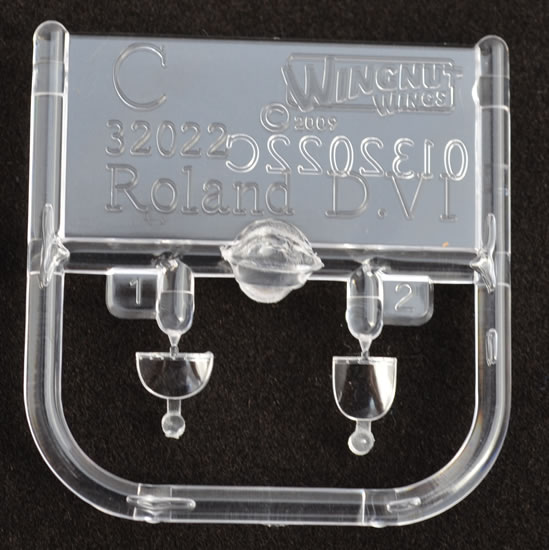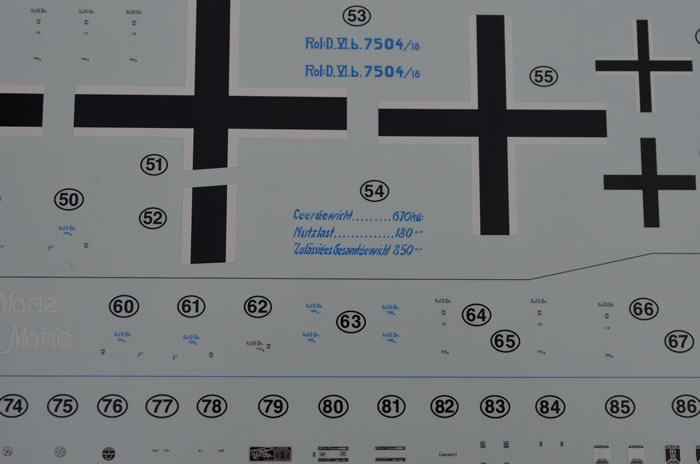Roland D.VIb

Wingnut Wings, 1/32 scale
| S u m m a r y |
Catalogue Number: |
Wingnut Wings Kit No. 32017 - Roland D.VIb |
Scale: |
1/32 |
Contents and Media: |
125 gray plastic parts; 25 part highly detailed 1185ps Benz Bz.IIIa engine;9 photo-etched metal detail parts; Full colour 28 page,A4 instruction manual and six painting options with decals produced by Cartograf. |
Price: |
USD$69.00 with free shipping worldwide, available online from Wingnut Wings' website. |
Review Type: |
First Look |
Advantages: |
Wingnut Wings excellent construction design, combined with an aircraft type (the D.VIb) not kitted in this scale before. |
Disadvantages: |
|
Conclusion: |
Highly Recommended. |
Reviewed by Phil Parsons

HyperScale is proudly supported by Squadron
The Roland D.VI was designed by the Luft-Fahrzeug-Gesellschaft (L.F.G.), late in 1917, with the prototype being the 1000th aircraft to be built by L.F.G., first flying in November 1917. The D.VI was a single bay biplane which discarded the L.F.G.-Roland patented Wickelrumpf (literally "wrapped body"), or semi-monocoque fuselage, constructed with two layers of thin plywood strips, diagonally wrapped around a male form to create a "half-shell", used in previous L.F.G aircraft such as the Roland C.II, D.I and D.II, in favour of the equally unusual (for aircraft use) Klinkerrumpf (or clinker-built) construction where the fuselage was built of overlapping thin strips of spruce over a light wooden framework. Visibility for the pilot was good, while the aircraft had above average manoeuvrability.
In January 1918, two Roland D.VIs were entered into the first fighter competition held by Idflieg at Adlershof, one powered by a 160 hp (119 kW)Mercedes D.III engine and the other by a Benz Bz.IIIa of similar power and, like the Mercedes, another upright, inline, six cylinder engine . Although the winner of the competition was the Fokker D.VII, orders were placed for the Roland as insurance against production problems with the Fokker.
A total of 350 were built, 150 D.VIa powered by the Mercedes, while the remaining 200 were powered by the Benz and were called D.VIb. Deliveries started in May 1918, with 70 D.VI’s in frontline service on 31 August 1918.The only surviving artefact of the LFG Roland D.VI still existing in the 21st century is the complete fuselage of a D.VIb, displaying IdFlieg military serial number 2225/18, on display at the Polish Aviation Museum in Kraków, Poland.
Brett Green first reviewed the Wingnut Wings Roland D.VIa here back in January 2011. Given that this kit contains three main sprues in common as well as the clear sprue, I will concentrate of the Roland D.VIb differences using the construction sequence as a guide. This latest release gives you numerous options to produce either an early or a late model Roland D.VIb.
Sprues
-
Mostly cockpit accessories, common with D.VIa
-
Wings elevators and rudders ailerons, common with D.VIa
-
Clear parts, common with D.VIa
-
Fuselage, wheels etc, common with D.VIa
-
Benz Bz IIIa engine specific
-
D.VIb specific elevator, ailerons rudder.

Construction begins with the cockpit using Wingnut Wings standard combination that we are now familiar with; of drawings, colour images, and black and white images all to assist with construction. Of note, the divider between the cockpit and rear fuselage is a wonderfully replicated piece of stretched material that is realistically recreated.
The engine bay construction flows logically into the BENZ Bz.IIIa 185ps engine, that depending upon what scheme you are building has the option of either standard or ‘altitude” intake manifold. Two parts on the engine sprue are listed as unused (parts 10 and 12), these appear to be Benz cylinders without moulded wiring/ignition harnesses.

You will have a very beautifully engine when finished which will unfortunately be covered up by the streamlining cowlings, if you choose to fit them. The engine bay and fuselage construction has some of the more difficult steps in the construction, since the fuselage is in common with the Roland D.VIa you are required to undertake some plastic surgery to remove six of the moulded engine inspection panels, to be replaced by two plastic parts. The unique overlapping wood construction will make this trickier than on a standard fuselage construction.

With the last fuselage items installed, it is onto the main visible differences with late Roland D.VIb construction. Early Roland D.VIb fuselages had 99% in common with the D.VIa, the later D.VIb had a revised rudder, and with a new designed horizontal stabiliser with enlarged elevators. As construction continues onto the wings the final late model variations are the redesigned ailerons. With the wings attached, the undercarriage, propeller, engine cowls round out construction and as mentioned earlier Wingnut Wings recommend leaving the engine cowls off to display the engine detail.
Marking Options
WWI aircraft details can be vague and Wingnut Wings point out that “schemes are contentious at the best of times” so they give you options and their suggestions for colours and whether four or five coloured lozenge were possibly used. You get five main options with a sixth if you wish to do the last surviving museum example. There are three HUGH decal sheets, one with the main aircraft markings and stencils, with the other two being either four of five colour lozenge plus rib tape. The decals are by Cartograf, and are amazing.

Decal options:
-
Roland D.IVb, ’Berg Wappen’, mid 1918.
-
Roland D.VIb 7502/18 "P132", McCook Field, Dayton Ohio USA, May to June 1920. It is nice to see a post war example provided in a very colourful American example.
-
Roland D.VIb 7504/18, November 1918
-
Roland D.VIb 7535/18 "Marie", Oskar Freiherr von Boenigk, Freikorps late 1918-1919 (26 victories)
-
Roland D.VIb, Jasta 59, mid to late 1918
+ there are decals to complete Roland D.VIb, 2225/18 (now on display at the Krakow Museum Poland)
The Roland D.VIb is a very attractive and unusual looking aircraft due to its fascinating overlapping wooden plank construction. Wingnut Wings has produced another amazing kit that covers the Roland D.VIb’s use into 1920. The schemes are colourful, and varied; there should be a style that will appeal to all WWI builders.
Another Winner, very highly recommended.
Thanks to Wingnut Wings for the review sample.
Review Text and Images Copyright © 2014 by Phil Parsons
Page Created 1 April, 2014
Last updated
1 April, 2014
Back to HyperScale Main Page

|
